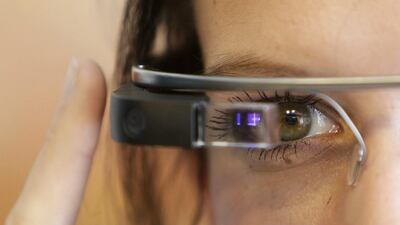Medical technologies that have long been detailed in science fiction are becoming realities in the world’s laboratories and hospitals, which makes extending the average lifespan to triple digits much more viable.
Expectation is growing within medical and scientific circles that technology can “cure” the ageing process, especially considering how the rapid evolution of healthcare tools has lengthened life expectancy over the past two decades. Since 1900, life expectancy has doubled to 71.4. The first stethoscope in 1815, the X-ray in 1895, the pacemaker in 1936, the mechanical heart in 1952, DNA sequencing in 1992 and the modern-day implementation of bionic eyes for visual impairment are examples of a much broader wave of innovation.
Aubrey de Grey, the chief science officer of the Sens Research Foundation, says the first person to reach 150 is probably already alive, while scientists from the Albert Einstein College of Medicine say the maximum global age limit is about 115.
__________________________________
Health debate
This is the third of a three part debate about the potential human lifespan.
Read part one: Will living to 150 become the new normal?
and part two: Nicole Sirotin looks at present and future medical advances
__________________________________
Whatever the number, efficient and cost-effective medical technologies will be highly valued, because the United Nations expects the global population to rise by 30 per cent to 9.7 billion by 2050. As the pressure on the global healthcare sector grows, research and development must sustain high international standards and aim to cater for different geographic climates, socio-economic demographics and ethical norms. The diversity in the world’s health portfolio must be reflected by a range of technological offerings. It is not a case of one size fits all.
The diagnostic cost of sequencing our DNA has drastically fallen from $100 million (Dh367m) in 2001 to less than $1,000 today, which opens the gateway to a new era of personalised medicine. The price could slide to the low triple digits in a few years.
Nanotechnology uses tiny robots to make cellular repairs and operate within dimensions that are often no thicker than the width of a human hair. This includes delivering drugs straight to trouble spots. The global market value of nanotechnology in medical devices is projected to swell from $5.8 billion in 2016 to $10.45bn by 2021, according to Market Data Forecast.
Medical staff, especially trauma specialists, can use head-mounted Google Glass technology to have hands-free access to the internet and instantaneous access to patients’ medical history, medical checklists and the availability of hospital resources. Patients could soon be issued “insideables”, which are chips planted just under the skin, and “ingestibles”, which will be tiny sensor pills that we swallow. A “health check chair” could bolster efficiency by automatically and simultaneously checking patients’ vital signs while they sit.
Technology is also crucial in the global effort to predict and counter epidemics, which have the potential to escalate into a global threat and derail the quest for longevity. A company called WeRobotics plans to battle the spread of the Zika virus by using drones to distribute sterile mosquitoes to hard-to-reach places. The same process could be applied to fight malaria, or transport food and medicine parcels to extreme and remote terrain.
Digital data analytics can be used to launch preventive measures in high-risk areas.
Medical technologies must counter the risk posed by the world’s growing aviation and shipping sectors, which inevitably increases the threat of cross-border infections. The frequency of global travel was a major concern during the ebola outbreak in 2014 and 2015 and remains a key challenge in efforts to contain Zika. There are also worrying signs that reports of yellow fever in central Africa could accelerate.
Medical technologies can be used to counter the misuse of existing health care. A system that monitors patients’ self-administered medications would slow what is a damaging trend. Antibiotics revolutionised medical care when they were introduced 90 years ago, but doctors and patients’ overuse of the drugs means the rate of resistant bacteria is rising. The World Health Organisation says 480,000 people worldwide are developing multi-drug resistant tuberculosis every year, for example.
Undoubtedly, there are challenges, but the trick to increasing the global average life expectancy to the triple digits is to plug the gap in health care between developing and developed countries. All countries and societies need to benefit. Otherwise, extraordinary medical innovations will be a victory for a few, instead of a new era in global health care.
Dr Nicole Sirotin is chief of the internal medicine department and director of the executive health programme at Cleveland Clinic Abu Dhabi. Free tickets for the World's Fair 2020 Debate Series on The Future of Health: The First Person Who Will Live To 150 Has Already Been Born, tonight at NYU Abu Dhabi, can be booked at thegulfintelligence.com

